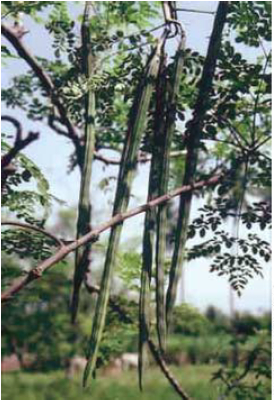Difference between revisions of "Natural coagulation / Flocculation"
From Akvopedia
| Line 1: | Line 1: | ||
| + | {{stub}} | ||
| + | |||
[[Image:coag flocc icon.png|right]] | [[Image:coag flocc icon.png|right]] | ||
[[Image:moringa seed pods.jpg|thumb|right|250px|Moringa seed pods used to coagulate sediment in water. Photo: moringanews.org]] | [[Image:moringa seed pods.jpg|thumb|right|250px|Moringa seed pods used to coagulate sediment in water. Photo: moringanews.org]] | ||
Revision as of 21:31, 13 July 2012
| |
The sedimentation process can be quickened by adding coagulants to the water.
Coagulation with extracts from natural and renewable vegetation has been widely practiced since recorded time. There is a variety of natural coagulants used around the world, depending on the availability.
Extracts from the seeds of Moringa oleifera can be used, the trees of which are widely present in Africa, the Middle East and the Indian subcontinent. Strychnos potatorum, also known as clearing nuts or the nirmali tree, is found in India to treat water. Prickly pear cactus is prevalent and traditionally used in Latin America. There are also reports of other natural coagulants being used, such as fava beans.

